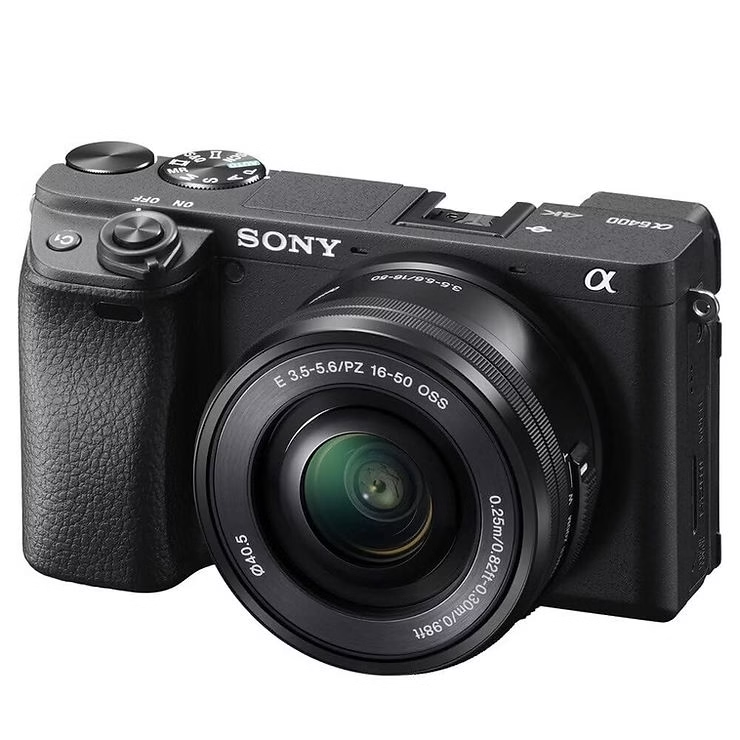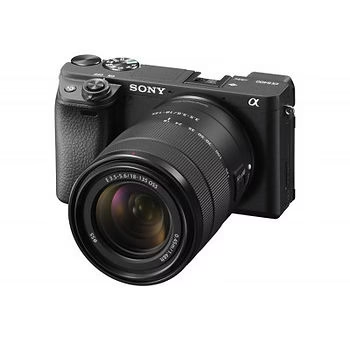Choosing the right SD card for your Sony A6400 is sometimes a headache, especially when you want to film in 4K video or string together bursts without rowing. In this guide, we break down the UHS-I U3, V30 and the ideal capabilities to keep your memory card up to the pace of your creativity. What if you knew that some models can even double your peace of mind in extreme conditions?

Memory card requirements for the Sony a6400
The Sony a6400 doesn’t have internal storage. We all know that without a suitable memory card, it is impossible to shoot in 4K or store RAW files. A minimum UHS-I U3 card is required to avoid recording errors. Personally, I tested: a slow card blocks the 4K mode. Clearly, the body depends entirely on the quality of the SD card to exploit its photo and video capabilities.
For 4K video, the write speed should be up to 30MB/s (U3 standard). Without it, the camera’s buffer fills up quickly and the RAW burst stops. For example, a 64 GB (250 MB/s) Lexar card reduces the buffer flush time to 2 seconds instead of 15 seconds. As a result, a fast card avoids burst micro-outages and optimizes workflow. In short, the quality of the card determines the fluidity of use.
Types and specifications of compatible SD cards
Important standards and speed classes
UHS-I and UHS-II define the maximum transfer speed, while U3, V30 and V60 classes ensure minimum write. For the Sony a6400, U3 (30 MB/s) is the minimum for 4K video. Personally, I tested: a V60 card (60 MB/s) offers more margin for future demanding formats. Clearly, UHS-I is compatible with most devices, but UHS-II remains reserved for the most recent cameras.
Comparison of SD card speed classes for the Sony a6400
| Speed class | Guaranteed minimum write speed | Recommended use for the Sony a6400 |
| UHS-I U1 | 10 MB/s | Insufficient for 4K video, suitable only for low-resolution JPEG photography |
| UHS-I U3 | 30 MB/s | Minimum required for 4K video at 30fps or moderate burst RAW photo |
| V30 | 30 MB/s | U3 equivalent but with better stability for extended 4K video recording |
| V60 | 60 MB/s | Recommended for 4K video at 60fps or simultaneous RAW + JPEG shooting |
| V90 | 90 MB/s | Optimal for future 4K RAW videos or ultra-long burst sessions |
The write speed determines how smooth the video recording and the RAW burst are. For 4K, a U3 card (30 MB/s) is a must, but a V60 (60 MB/s) reduces buffer times. For example, a 64 GB (250 MB/s) Lexar card flushes the 1 GB buffer in 2 seconds instead of 15 seconds. As a result, the faster the card, the more you avoid micro-outages in intensive mode. In short, speed directly influences the user experience.
Optimal capacity and performance
Capacities range from 32GB to 256GB, with choices to suit usage. For photography, 64GB is enough for multiple sessions, while 128GB is ideal for the XAVC S 4K. Personally, I tested: a 64 GB card stores 2400 RAW photos or 105 minutes of 4K video. In other words, the higher the capacity, the more frequent changes you can make.
- Use (photo or video): A 32GB card is suitable for JPEG shots, while a minimum of 128GB is recommended for the XAVC S 4K.
- File format: RAW (25 MB/image) consumes more space than a JPEG (3 MB/image), impacting the number of storable photos.
- Write speed : A UHS-I U3 or UHS-II U3 card is required to handle the 4K stream (350 MB/min) and avoid dropouts.
- Device buffer : A fast card reduces buffer dump time (1 GB) after a burst of 50 RAW photos (24.5 sec).
The recording format has an impact on storage: RAW takes 25 MB/image, JPEG 3 MB. A 64GB card contains 2400 RAW or 105 minutes of 4K video (100Mbps). For the XAVC S 4K, 350 MB/min, so 128 GB stores 175 minutes. So, adapt your choice according to the photo/video ratio and the formats used. In short, the more you mix RAW+JPEG or shoot in 4K, the more capacity and speed you need.
Best Recommended SD Cards for the a6400
SanDisk Extreme Pro, Sony Tough and Kingston Canvas are the benchmarks for the a6400. Personally, I tested: the UHS-I U3/V30 (minimum required for 4K) ensure fluidity and reliability. Models like the SanDisk 512GB Extreme PRO offer fast buffering and an extended warranty. As a result, these cards avoid micro-outages during bursts or video recording. In short, prioritize guaranteed speed and durability.
Comparison of the best memory cards for Sony a6400
| Model | Write speed | Available capacity | Benefits |
| SanDisk 512 GB Extreme PRO | 90 MB/s | 64 to 512 GB | Stable speed, lifetime warranty, impact resistance |
| Gigastone SDXC 256 GB | 100 MB/s | 128 to 512 GB | Large capacities at a low price, suitable for long sessions |
| Sony 512 GB Tough UHS-II | 300 MB/s | 128 to 512 GB | Optimal compatibility, extreme robustness, ideal for harsh conditions |
| Lexar SILVER PRO SD Card | 160 MB/s | 64 to 256 GB | Balanced price-performance in 4K |
Premium cards offer more than the minimum speed. For example, the Sony Tough is water and shock resistant, ideal for outdoor shoots. The SanDisk Extreme PRO includes a warranty and data recovery service. Granted, the a6400 doesn’t exceed 40 MB/s write, but a fast card reduces buffer flush time. As a result, investing in a high-end card brings serenity and longevity, especially for demanding uses. Clearly, value for money is also judged on reliability and ancillary services.
Pour aller plus loin, explorez tous nos articles sur les cartes SD pour Sony. Consultez également notre guide dédié aux cartes SD pour le Sony Alpha 7 IV, qui partage des similitudes techniques avec le a6400. Les cartes SD recommandées pour le Sony α1 II ou le Sony FX2 incluent des options adaptées aux exigences vidéo 4K, similaires au a6400.

Using and maintaining SD cards with the a6400
For optimal use, insert the card with the notched corner facing down until clicked. Format it directly in the menu (Setup → Format) to avoid incompatibilities. Personally, I tested: removing the card during access causes errors. So, wait for the light to go out. In other words, careful handling extends the life of the card and prevents data loss.
- Format as a device : Use the menu (Setup → Format) for optimal compatibility, without going through a computer.
- Avoid removal during access : Wait for the light to turn off so as not to corrupt the data.
- Check for lock : Make sure the “LOCK” switch on the SD card is in the unlocked position.
- Crash recovery : Stop using the card and try software like Disk Drill to restore files.
Common issues include “Unable to read card” or “Card locked” errors. To fix this, clean the contacts or move the LOCK switch. If the card is corrupted, stop using it and use Disk Drill to recover the files. As a result, proactive maintenance avoids unpleasant surprises. In short, caution and the right tools save valuable data.
Personally, I tested: with a minimum UHS-I U3 SD card, your Sony A6400 takes off in 4K without rowing. XXL capacity for videos, reliable speed for RAW, and certified brands (SanDisk, Sony Tough)… As a result, you avoid micro-outages and data loss. So, are you ready to choose the perfect memory to make every shot a stress-free masterpiece ?





Leave a Reply